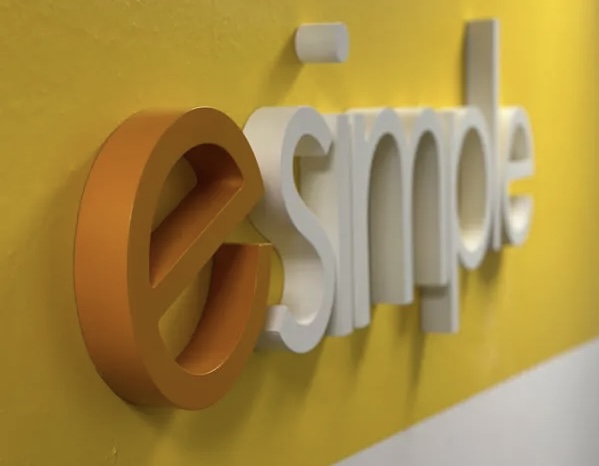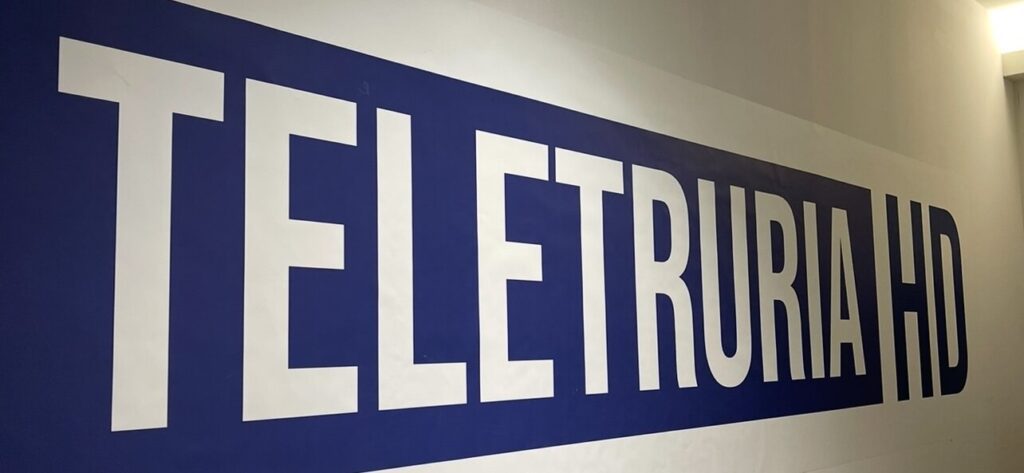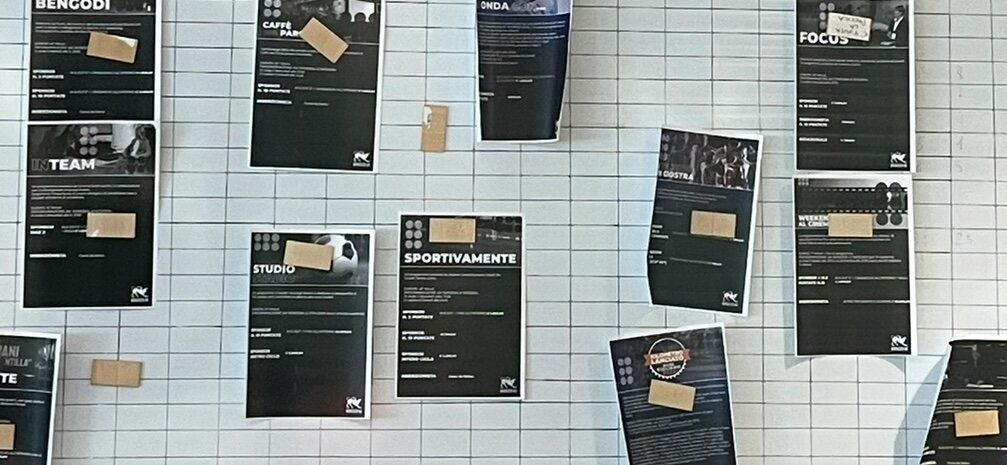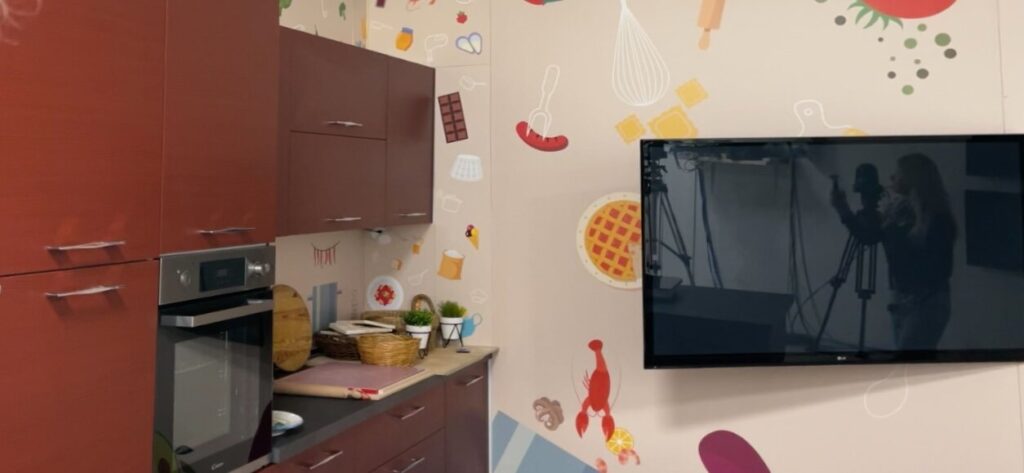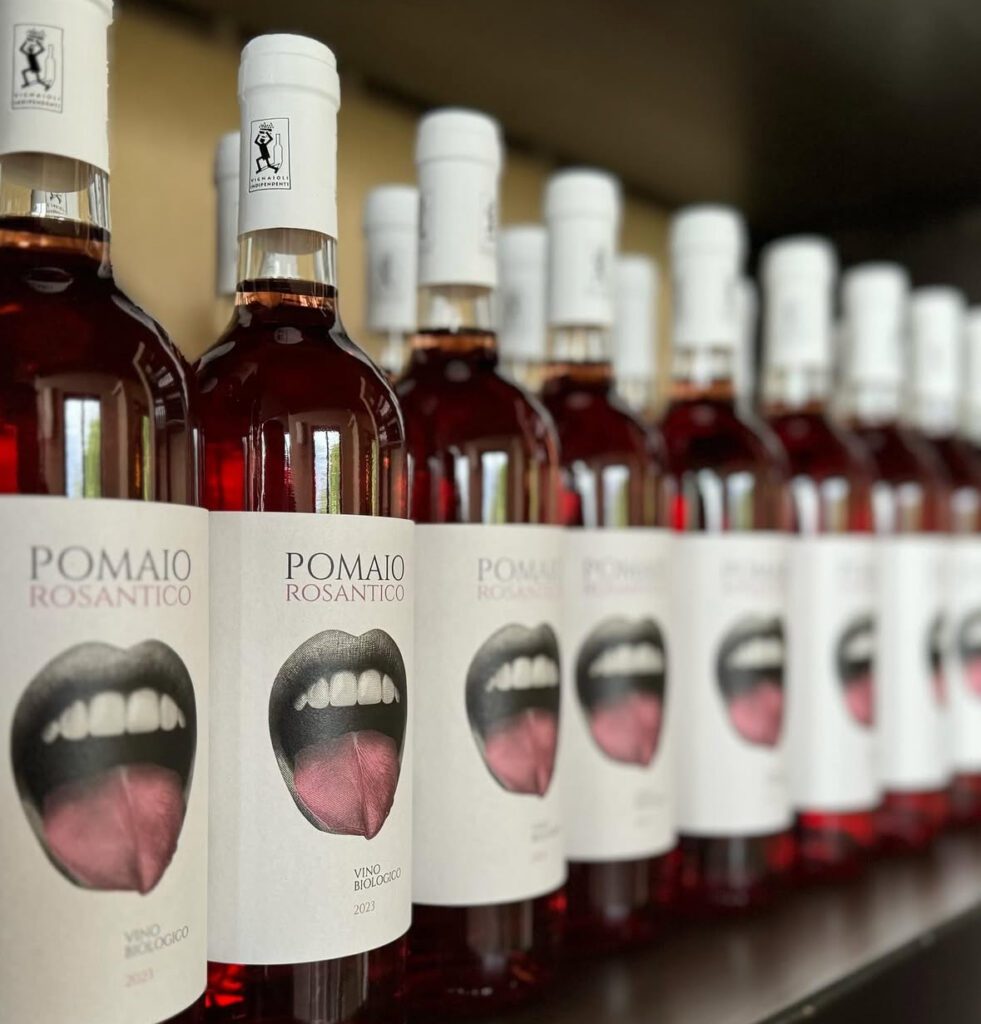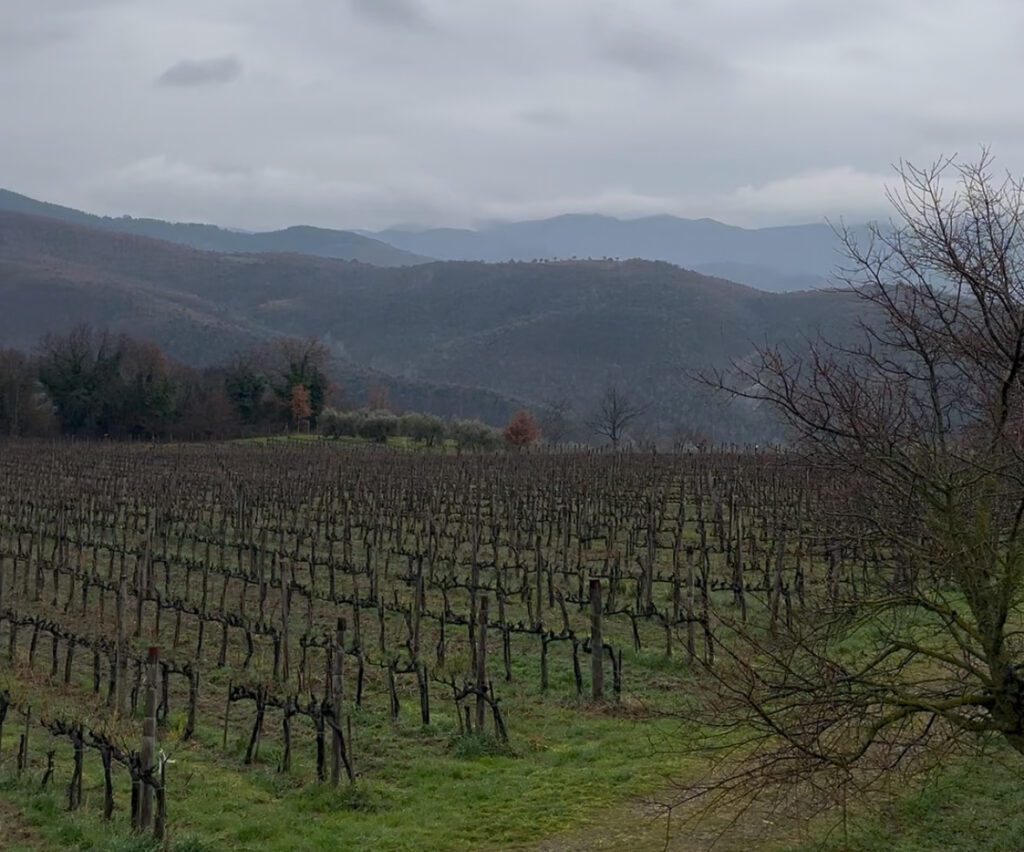On a beautiful spring Monday in late March, my Innovators in Journalism class went to the office of the minds behind Esimple, a company that digitally transforms other businesses to stay current in today’s market. This service can include everything from websites, to augmented reality, to virtual reality. We got to talk to Francesco Marcantoni, pictured below on the right, one of the founders of Esimple, and learn all about his innovative business.
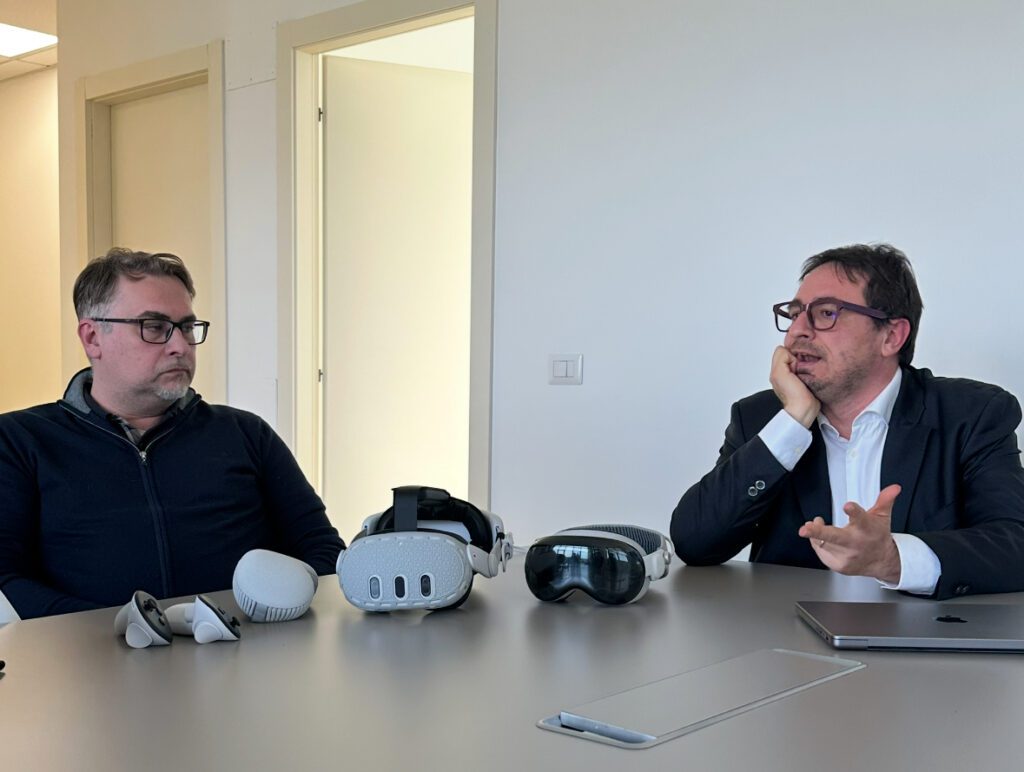
The first question we asked, as has now become standard for our interviews, was “What is your definition of innovation?”
Marcantoni: “I think the innovation should be something that gives more, something that gives an advantage. I think it’s only useful when it gives an advantage to those who use it. So a lot of innovation takes time to reach the target because it’s hard to understand early on that the real use of the technology can be an innovative thing.”
I think his definition couldn’t be more perfect to set up for the rest of my questions. It almost foreshadows the main thing I learned from this interview: the fact that innovation can innovate on top of itself.
I pointed this out directly, asking him, “It sounds to me like you guys innovate based on other people’s innovation. How do you navigate relying on other innovation for your innovation?”
Marcantoni acknowledged this reality, explaining, “It’s true, because obviously we couldn’t afford the cost to create innovation talking about hardware or engines because it costs too much money to make it. So you have to use something that is made by someone else and you have to be fast to understand what you can do with this kind of innovation.”
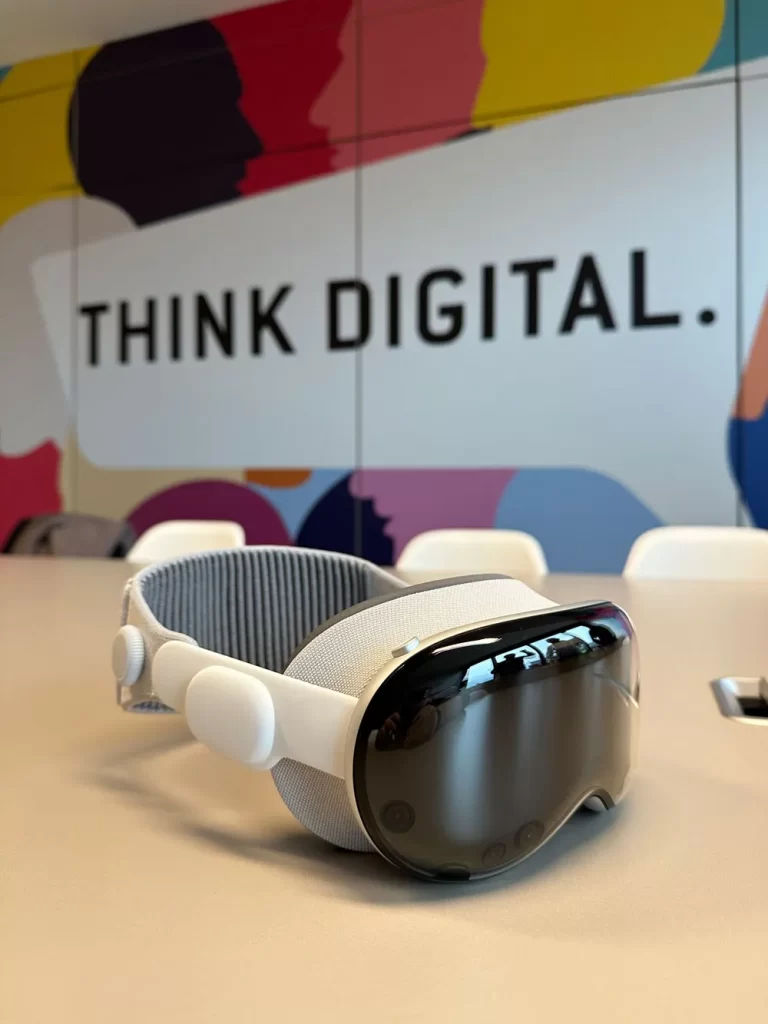
He gave the example of Apple Vision Pro, pictured left, noting that even Apple doesn’t fully know where the product will go in the next few years. He compared it to the launch of the iPhone, where the real innovation wasn’t just making a smartphone but realizing that a touch interface could completely change how people interacted with technology.
This perspective was interesting to me. Innovation isn’t just about inventing something brand new? Turns out, it’s also about recognizing potential and pushing existing technology in unexpected directions. In Esimple’s case, that means adapting tools like Unity, hand-tracking, and augmented reality to fit business needs. I learned that true innovation isn’t just creating it’s also about seeing what exists and asking, “What more can we do with this?”
I then added, “When I look at this technology, all I see is potential and more potential. Obviously, some businesses are skeptical, but which industries are the early adopters? Who is really embracing this?”
Marcantoni explained that while virtual and augmented reality are still emerging in many industries, the automotive industry has been using them for years. “For example, the Vario headset, which was the best before the Apple Vision Pro, was primarily used in the automotive industry for prototyping, to assess comfort, size, and design. Flight simulation is another example. This kind of technology has been used in that field for over 20 years, long before VR became commercially available.”
But when asked, “Who should be using this that isn’t yet?” Marcantoni pointed to an unfortunate, but important, point: many companies already have the necessary 3D models and tools but aren’t using them. “The biggest challenge is creating the digital assets. This technology could work in any industry, but companies that already use 3D modeling, like those designing mechanical equipment, aren’t fully utilizing what they have. They don’t understand its potential.”
As we know in innovation, not understanding the potential of something can be a serious roadblock.
Even when businesses have the resources, he explained, the biggest resistance often comes from leadership. “In Italy, many companies are still run by 70- or 80-year-old men who don’t want to hand over control to younger engineers. They say, ‘I’m the owner, you’re the employee.'”
Businesses can “Trasformiamo la realtà” with the help of Esimple.
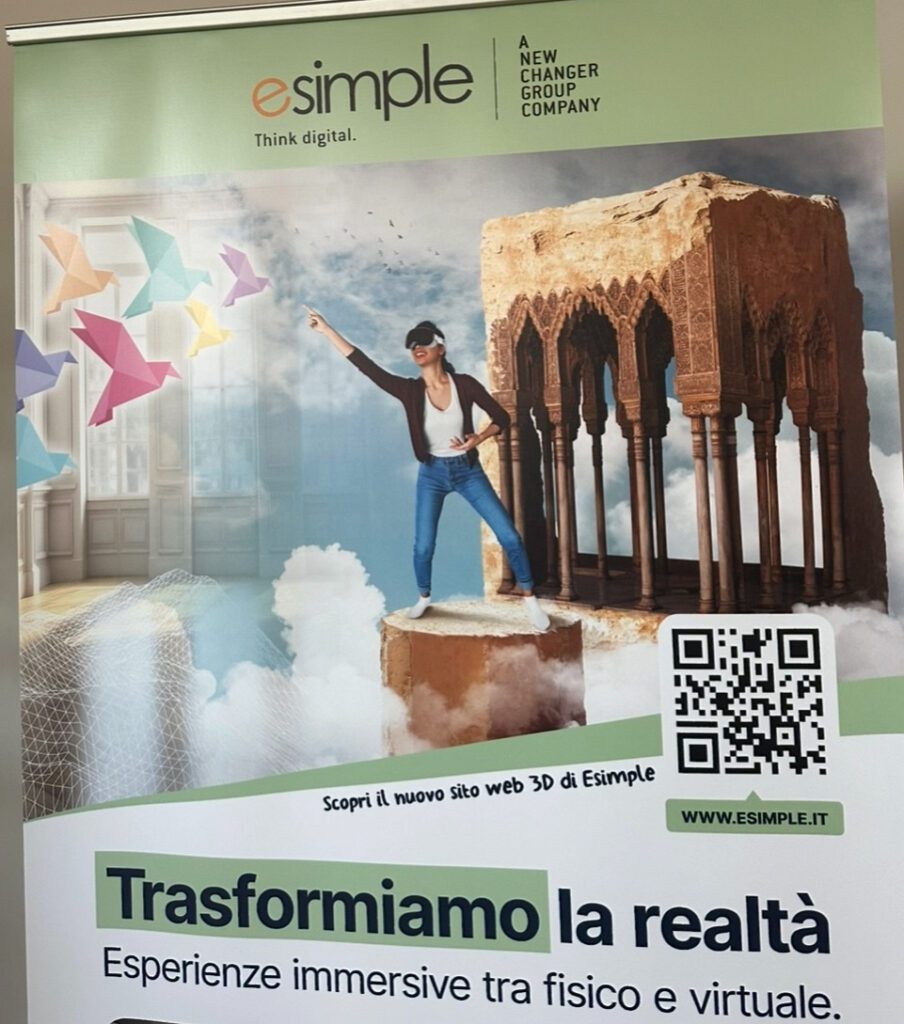
This final point stuck with me. A huge part of whether or not innovation is implemented is about the mindset of the person who has the power to innovate. The tools exist, the potential is limitless, but without forward-thinking leadership, the most groundbreaking advancements go untapped. (Don’t think about that point too hard, it’ll make you go down a rabbit hole of all the things that we’re missing out on right now.)
All in all, at Esimple I learned something important: their work proves that sometimes innovation is about seeing beyond what already exists and daring to take the next step with it. And sometimes, that next step is esimple: embracing change. Did you see what I did there?


